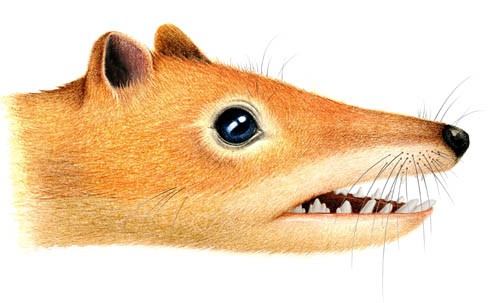"Scientific Reports" published on May 24, 2016 reported a new genus and species of mammals discovered in the Early Cretaceous Jehol Biota - Luo's Late Teeth - jointly researched by the Institute of Vertebrate Paleontology of the Chinese Academy of Sciences and Linyi University. Beast (Anebodon luoi). The fossil is the basal species of Paradontia. It has fewer molar teeth than the previously discovered Zhanghetherium and Maotherium, both belonging to the same genus of Paradontia. It is the same as that of living beasts, indicating that the tooth pattern of living beasts has already been developed in the Early Cretaceous. The formation provides key evidence for people to study the evolutionary relationship and tooth homology of modern mammals.
The new specimen was discovered in the Yixian Formation of the Early Cretaceous in Lujiatun, Liaoning, dating back 125 million years. It is a three-dimensionally preserved skull fossil with a lower jaw. The fossils of Zhanghetherium and Maotherium previously discovered in western Liaoning were both flattened plate-shaped fossils that lacked key skull features. The morphological characteristics of the skull of Paradontium were described for the first time in Luodontium. The basal species of Paradontodon are considered to be the ancestral types of the Mesozoic mammal groups Eutricydontium, Multituberculodont, and modern mammals. The new skull characteristics are important for studying the phylogenetic relationship between Mesozoic mammals and modern mammals. Character polarity is of great significance.

Reconstruction of the skull of Luo's late-emerging odontodont (painted by Shi Aijuan)
animal tags:
We created this article in conjunction with AI technology, then made sure it was fact-checked and edited by a Animals Top editor.